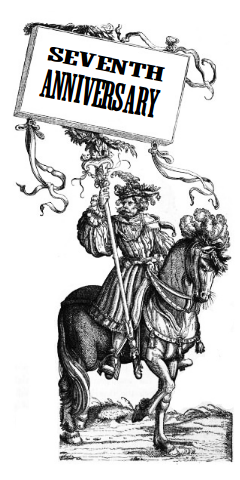From Dr. Boli’s Fables for Children Who Are Too Old to Believe in Fables.
In its first run, this was one of Dr. Boli’s most popular articles. It accumulated a long chain of comments, which are worth reading if you are a connoisseur of Internet comments.

ONCE TWO SCIENTISTS—it hardly matters what sort—were walking before dinner beside a pleasant pond with their friend, a reporter for the Dispatch, when they happened to notice a bird standing beside the water.
“I am a skeptic,” said the first scientist. “I demand convincing evidence before I make an assertion. But I believe I can identify that bird, beyond all reasonable doubt, as a duck.” The journalist nodded silently at this assertion.
“I also am a skeptic,” said the second, “but evidently of a more refined sort, for I demand a much higher standard of evidence than you do. I see no irrefutable evidence to back up your assertion that this object before us is even a bird, let alone positively identifying it as a duck.” The journalist raised his eyebrow sagely.
“But what of the feathers?” the first scientist demanded. “Surely you must have noticed the feathers, which are the veritable hallmark, so to speak, of a bird.”
“I have seen nearly identical feathers on a feather duster,” the second replied. “At present the evidence is not strong enough to say whether the object before us is a member of the avian genus Anas or a common household implement.” The journalist held his chin and pondered this revelation.
“But this object has two legs, and walks upon the ground,” the first scientist objected.
“So indeed do many members of the genus Homo, including our own species,” the second replied, and the journalist smiled a knowing smile.
“But this creature has webbed feet,” the first scientist pointed out, his voice rising slightly.
“My cousin Albrecht has webbed feet,” the second replied. “You are making my case for me by presenting not one but two compelling pieces of evidence that this object is in fact a member of the genus Homo, and very likely my cousin Albrecht.” The journalist looked up, as though he were carefully weighing the argument.
“But it has a broad and flat bill,” the first scientist said.
“The platypus has a broad and flat bill,” the second pointed out, “and so has a baseball cap. Since we have much evidence that suggests the object is a member of the genus Homo, and some that suggests it belongs to the genus Ornithorhynchus, it seems reasonable to suppose, as a provisional hypothesis, that the object is a mammal, and with somewhat less certainty we may identify it as my cousin Albrecht wearing a baseball cap.” The journalist, unable to suppress his instincts any longer, produced a long, narrow notebook and began to scribble furiously.
“But it has feathers!” the first scientist shouted. “It has feathers, and two legs, and webbed feet, and a broad flat bill, and it says ‘quack,’ and—look—it’s gone into the pond now, and it’s floating on the water. It’s a duck!”
“Each one of those observations is susceptible of a different explanation,” the second scientist responded calmly. “Where is your compelling evidence?”
The first scientist slapped his forehead. Then, calming himself, he turned to his friend the reporter. “Since we seem unable to reach a conclusion,” he said, “would you be kind enough to favor us with your opinion?”
“Reputable scientists disagree,” said the journalist. “There is a debate. The question is far from settled. The truth probably lies between the two extremes of duck and not-duck.”
So the two scientists both stomped away in dudgeon and hostility, and the journalist, unable by himself to decide where to eat dinner, starved to death.
